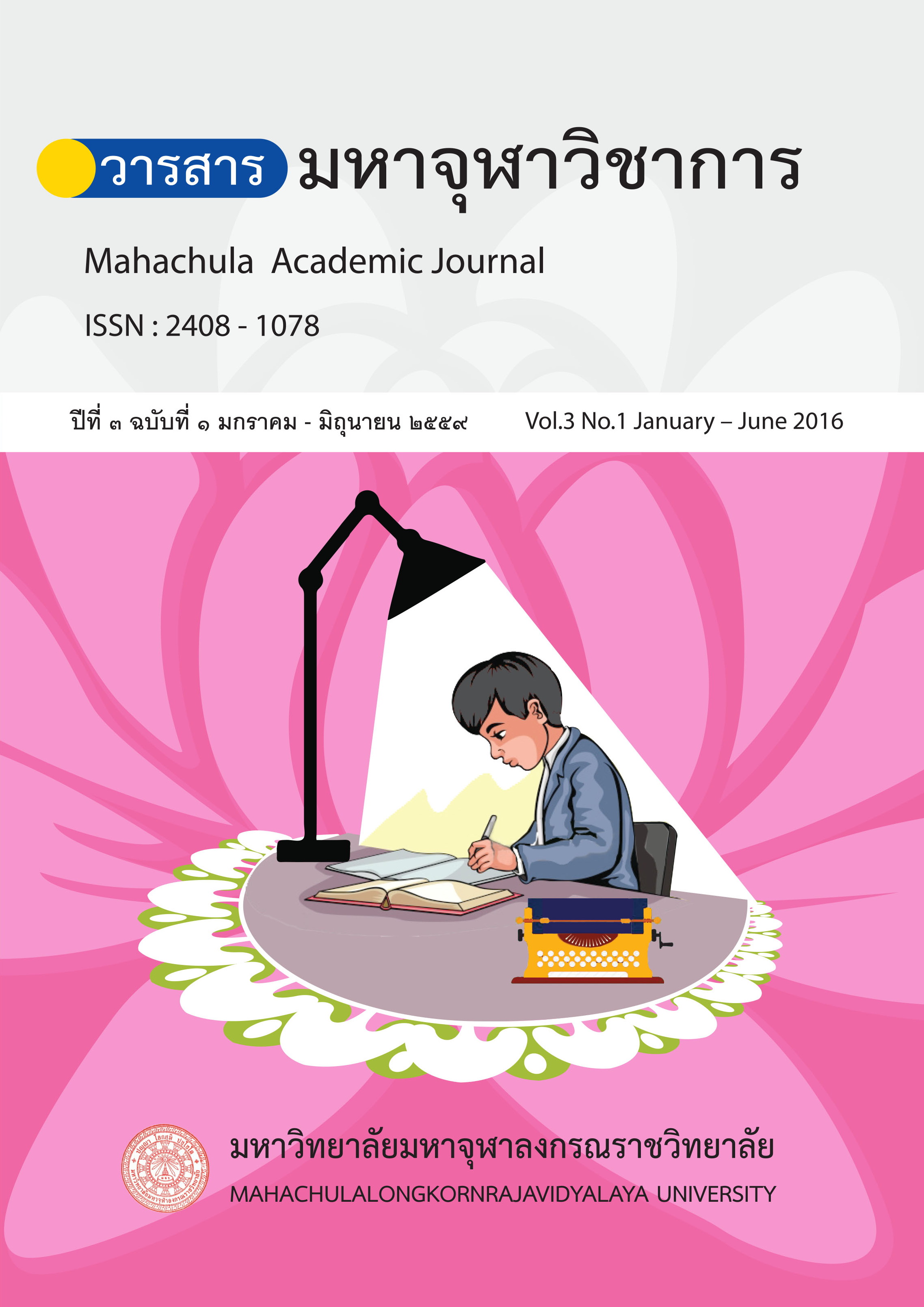Buddhist Principles of Holistic Health Care in Ederly people
Main Article Content
Abstract
The seniors or the old are a group of persons with the age of the decline. Buddhist concepts were discussed the three elements of a holistic lifestyle, the Trisikkha, namely: (1) the development of the relationship with the environment, in both of the physical environment and the social environment. It is conclusively called “Sila”, (2) by developing the mental side, the mental health is the pretty good, strong and happy with charitable intention and conditions conducive ready-to-use for short sessions (3) the development of intelligence. It is a holistic lifestyle all the three aspects are interrelated and must be linked to each other constantly, and the main threefold can be used to develop four areas: prayer, four health cares of the elderly into a lifestyle that was pretty good. Main threefold to self care lead to the development of four areas: prayer, prayer is a body composed of four self-care physical sacraments (Kaya bhavana), prayer self-care is the relationship with others (silabhavana). Jittabhavana is a state of mind. And wisdom is prayer to consider everything carefully (Panna bhavana). People who follow the four main prayers would be in a great joy. It is a truly holistic healthcare.
Article Details
References
คณะกรรมการผู้สูงอายุแห่งชาติ. กระทรวงการพัฒนาสังคมและความมั่นคงของมนุษย์, ๒๕๔๕. แผนผู้สูงอายุแห่งชาติฉบับที่ ๒ (พ.ศ. ๒๕๔๕-๒๕๔๖).
ศศิพัฒน์ ยอดเพชร. บูรณาการระบบดูแลระยะยาวสำหรับผู้สูงอายุไทย, รายงานฉบับสมบูรณ์ สำนักงานกองทุนสนับสนุนการสร้างเสริมสุขภาพ (สสส.) และมูลนิธิสถาบันวิจัยและพัฒนาผู้สูงอายุไทย (มส. ผส) กรุงเทพมหานคร: โรงพิมพ์เจพริ้นท์, ๒๕๕๔.
สุชาดา ทวีสิทธิ์. บทบรรณาธิการ: การเปลี่ยนกระบวนทัศน์เพื่อการวิจัยผู้สูงอายุ. ใน สุชาดา ทวีสิทธิ์ และ สวรัย บุณยมานนท์ (บรรณาธิการ). ประชากรและสังคม, ๒๕๕๓.
คุณค่าผู้สูงอายุในสายตาสังคมไทย. เอกสารวิชาการสถาบันวิจัยประชากรและสังคม มหาวิทยาลัยมหิดลหมายเลข ๓๗๒. พิมพ์ครั้งที่ ๑. นครปฐม: สำนักพิมพ์ประชากรและสังคม.
สำนักงานคณะกรรมการเศรษฐกิจและสังคมแห่งชาติ. การคาดประมาณประชากรของประเทศไทย. พ.ศ. ๒๕๔๓-๒๕๗๓ สำนักงานสถิติแห่งชาติ. ๒๕๕๐. สรุปผลที่สำคัญการสำรวจประชากรสูงอายุในประเทศไทย พ.ศ. ๒๕๕๐.
พระพรหมคุณาภรณ์ (ป.อ.ปยุตฺโต). สุขภาวะองค์รวมแนวพุทธ. ม.ป.ท.,ม.ป.พ.,ม.ป.ป. สำนักงานสถิติแห่งชาติ. รายงานการสำรวจประชากรสูงอายุประเทศไทย ๒๕๕๐. ม.ป.ท.,ม.ป.พ., ๒๕๕๑.
เพื่อนแก้ว ทองอำไพ. การวิเคราะห์สารสนเทศงานวิจัย ด้านผู้สูงอายุ. ม.ป.ท.,ม.ป.พ., ๒๕๕๔.
Glascock, A., &Feinman, S. Social asset or social burden: Treatment of the Aged in non-industrial societies. In C. Fry (Ed.), Dimensions: Aging, Culture, and health. Hadley: Ma: Bergin & Garvey, 1981.


